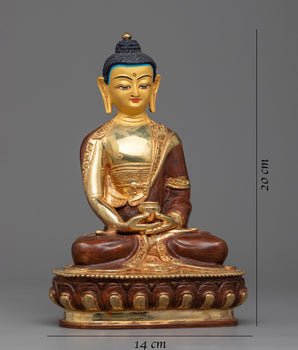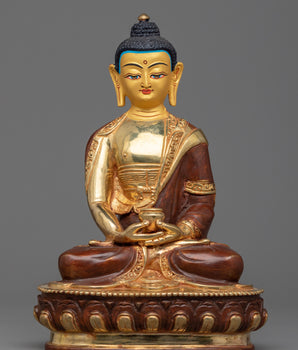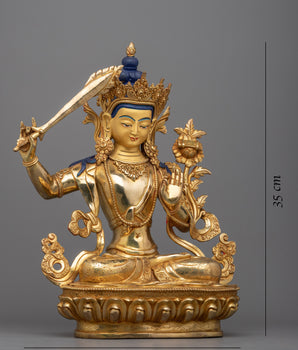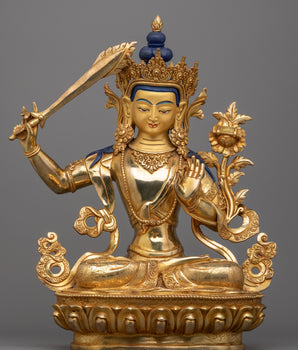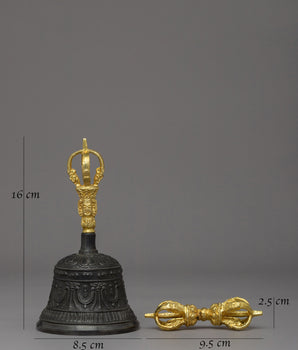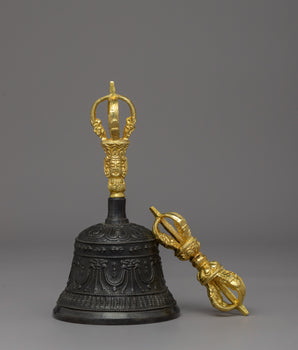The Timeless Sound of the Singing Bowl
Few sounds are as calming or otherworldly as the soft hum of a singing bowl. Whether you’ve encountered one in a meditation class, yoga studio, or healing session, the moment that rim begins to sing, time itself seems to slow.
But where did these mesmerizing instruments come from — and how did they become symbols of peace, mindfulness, and spiritual healing around the world?

Ancient Roots: Metal, Ritual, and Mystery
The story of the singing bowl begins in the ancient metal-working traditions of Asia. Long before they were used for meditation, bowl-shaped bells — known as standing bells — were being forged in China, India, and Nepal.
Archaeological traces date these instruments back as early as 1000 BCE, serving both ritualistic and domestic purposes. In the Himalayan region, particularly northern India and Nepal, artisan families perfected the craft of hammering alloys by hand — forging bowls that held not only offerings, but sound itself.
Why are they called Tibetan Singing Bowls?
While often labeled “Tibetan Singing Bowls,” their true roots lie in Nepal and northern India. The Kathmandu Valley was home to master metalworkers, especially from the Newar community, who shaped bowls from multi-metal alloys said to carry cosmic symbolism.
As Buddhism spread into Tibet in the 7th–8th centuries CE, these bowls journeyed north, becoming part of monastic rituals and meditation practices. Legends tell of masters like Padmasambhava introducing them to Tibetan monasteries — where their tones echoed through mountain temples and prayer halls.
Click here to Read in details about its origination
Singing Bowls Origin Story
Originally, these bowls were struck like bells, not rubbed. The continuous “singing” sound we recognize today likely developed later, when practitioners discovered that gently running a mallet around the rim created a soothing, sustained vibration.
This evolution transformed the bowl from a ritual object into a spiritual sound instrument, harmonizing ancient craftsmanship with meditative intent.
By the mid-20th century, the singing bowl’s story took a global turn. In 1972, Henry Wolff and Nancy Hennings released Tibetan Bells, the first Western album featuring these resonant sounds.

Since then, singing bowls have spread across the world — from Himalayan monasteries to Hollywood yoga studios — used for meditation, sound therapy, and energy balancing. Today, their soothing tones are even studied by scientists exploring the effects of sound on human brainwaves.
The Sacred Seven Metals of Singing Bowl
Traditional Himalayan bowls are typically made from five to seven sacred metals, each symbolizing a celestial body:
| Metal | Symbolic Planet |
|---|---|
| Gold | Sun |
| Silver | Moon |
| Mercury | Mercury |
| Copper | Venus |
| Iron | Mars |
| Tin | Jupiter |
| Lead | Saturn |
Every hammer strike, every alloy proportion, influences the bowl’s resonance — meaning no two bowls ever sound alike. Each one carries its own “voice,” forged in rhythm and intention.
The singing bowl’s circular form represents infinity — a reminder of the cycles of life, death, and rebirth. Its tone mirrors the cosmic vibration “Om”, considered the sound of creation itself.
When played, the bowl doesn’t just produce a note — it awakens stillness. The resonance clears the mind, balances energy, and draws awareness into the present moment.

How Singing Bowls Are Used Today
The modern world embraces singing bowls in many ways — both spiritual and therapeutic. Here’s how they’re commonly used:
🧘♀️ 1. Meditation and Mindfulness
Practitioners use the bowl’s tone to anchor attention and deepen awareness. The steady hum helps slow the breath, still the mind, and cultivate presence — especially in guided or silent meditation sessions.
🌙 2. Sound Healing and Energy Work
Healers use bowls during sound baths or chakra balancing. Each bowl’s pitch corresponds to a different energy center (chakra) in the body, believed to restore harmony where there is emotional or physical imbalance.
🛕 3. Spiritual and Ritual Practices
In Buddhist monasteries, bowls mark the beginning and end of prayers, signal moments of silence, or accompany chants. The sound is said to represent impermanence — rising, resonating, and fading away like life itself.
💤 4. Stress Relief and Sleep Therapy
The low-frequency vibrations of large bowls are used in sleep therapy, promoting relaxation by synchronizing the heartbeat and brainwaves to calmer states.
❤️ 5. Group and Environmental Healing
During sound baths or collective meditations, the resonance of multiple bowls fills the space, creating a harmonic field that many describe as “vibrational medicine.”
From sacred temples in the Himalayas to serene meditation halls worldwide, the singing bowl carries the same mission it did centuries ago — to connect us to stillness through sound.
Each vibration whispers an ancient truth: everything in the universe is in motion — and in harmony, we find peace.
Experience the Sound Within
Ready to bring the harmony of the Himalayas into your own practice?
✨ Try meditating with a singing bowl — even for a few minutes — and feel how sound transforms silence into serenity.
Explore authentic, handcrafted singing bowls from Nepal and India, and discover which tone resonates with your energy. Let the bowl sing — and let your soul remember its rhythm.











